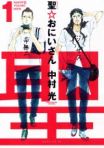For those who care about such things, which I hope is all of you, the Tokyo Metropolitan Assembly has passed its Youth Healthy Development Ordinance Bill, which Tom (The Comics Reporter) Spurgeon rightly describes as “extremely depressing and… deeply unnecessary.” Kevin Melrose has additional details at Robot 6.
The must-read piece on the legislation comes from Roland Kelts, writing for The Comics Journal:
“In other words: When the welfare of real children is at stake, the government turns the other cheek. But if you dare illustrate gay or trans-generational love, watch your back. Watch what you draw is akin to watch what you think. Brave new world?”
Here’s hoping Tokyo gets a swift economic kick in response to this.













































